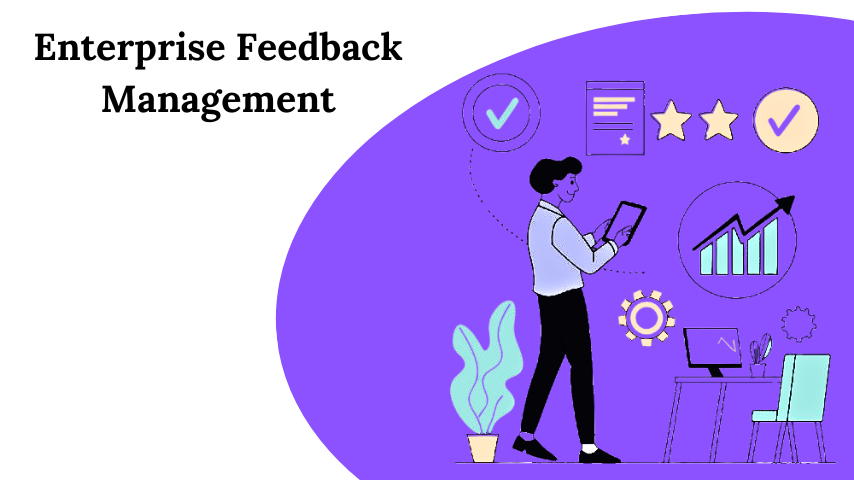In today’s data-driven business landscape, understanding and responding to stakeholder feedback has become crucial for organizational success. The EFM procedure, or Enterprise Feedback Management, represents a systematic approach to collecting, analyzing, and acting upon feedback from various stakeholders. This comprehensive guide explores the intricacies of EFM and its vital role in modern business operations.
Understanding Enterprise Feedback Management
Enterprise Feedback Management (EFM) is a comprehensive system and set of processes that organizations use to centrally manage the collection, analysis, and reporting of all feedback from stakeholders. This includes customers, employees, partners, and other relevant parties. The procedure goes beyond simple surveys, encompassing a strategic approach to gathering and utilizing feedback across the entire organization.
Core Components of the EFM Procedure
1. Feedback Collection
The foundation of any EFM procedure lies in its data collection methods. Organizations typically employ multiple channels to gather feedback:
- Online surveys and questionnaires
- Social media monitoring and analysis
- Customer service interactions
- Website feedback forms
- Focus group discussions
- Employee engagement surveys
- Point-of-sale feedback mechanisms
2. Data Integration and Management
Once collected, feedback data must be properly integrated and managed:
- Centralized data storage systems
- Data cleaning and validation procedures
- Integration with existing business systems (CRM, HR platforms)
- Security protocols for sensitive information
- Data categorization and tagging
Implementation Steps for EFM
Planning Phase
The successful implementation of an EFM procedure begins with careful planning:
- Define clear objectives and goals
- Identify key stakeholders and feedback sources
- Establish metrics and KPIs
- Select appropriate technology solutions
- Create implementation timelines
Execution Phase
Setting Up the Infrastructure
- Deploy EFM software solutions
- Configure integration points with existing systems
- Set up automated feedback collection channels
- Establish data storage and security protocols
Training and Communication
- Train staff on new systems and procedures
- Communicate changes to stakeholders
- Develop standard operating procedures
- Create feedback collection guidelines
Benefits of Implementing EFM
Organizational Advantages
Improved Decision Making
- Data-driven insights
- Real-time feedback analysis
- Trend identification and forecasting
Enhanced Customer Experience
- Better understanding of customer needs
- Faster response to issues
- Personalized service delivery
Operational Efficiency
- Streamlined feedback processes
- Reduced data silos
- Automated reporting capabilities
Best Practices for EFM Success
1. Consistent Methodology
Maintain consistency in:
- Data collection methods
- Analysis procedures
- Reporting formats
- Response protocols
2. Actionable Insights
Transform feedback into actionable steps:
- Prioritize feedback based on impact
- Create action plans
- Monitor implementation progress
- Measure results
3. Continuous Improvement
Regularly review and optimize:
- Collection methods
- Analysis procedures
- Response strategies
- Technology solutions
Common Challenges and Solutions
Technical Challenges
Data Integration Issues
- Solution: Implement robust API connections
- Regular system audits
- Proper documentation
Data Quality Problems
- Solution: Establish data validation protocols
- Regular quality checks
- Automated cleaning procedures
Organizational Challenges
Resistance to Change
- Solution: Comprehensive training programs
- Clear communication of benefits
- Gradual implementation approach
Resource Constraints
- Solution: Prioritize critical components
- Phased implementation
- ROI-based resource allocation
Measuring EFM Success
Key Performance Indicators
Monitor these essential metrics:
- Response rates
- Resolution times
- Customer satisfaction scores
- Employee engagement levels
- Implementation costs
- ROI measurements
Future Trends in Enterprise Feedback Management
Emerging Technologies
The future of EFM will be shaped by:
- Artificial Intelligence and Machine Learning
- Natural Language Processing
- Real-time Analytics
- Predictive Modeling
- Internet of Things Integration
What is the primary purpose of EFM?
Enterprise Feedback Management primarily serves to systematically collect, analyze, and act upon stakeholder feedback to improve organizational performance and customer satisfaction.
How long does it take to implement an EFM system?
Implementation timelines vary based on organization size and complexity, typically ranging from 3-12 months for full deployment.
What types of organizations benefit most from EFM?
While organizations of all sizes can benefit from EFM, it’s particularly valuable for:
- Large enterprises with multiple departments
- Customer-centric businesses
- Organizations with diverse stakeholder groups
- Companies undergoing digital transformation
How does EFM differ from traditional feedback methods?
EFM offers a more systematic, centralized approach compared to traditional methods, with enhanced analytics capabilities and integrated response mechanisms.
What resources are needed for successful EFM implementation?
Key resources include:
- Dedicated project team
- Technology infrastructure
- Training resources
- Budget for software and implementation
- Ongoing maintenance support
Conclusion
The EFM procedure represents a crucial evolution in how organizations manage and utilize feedback. As businesses continue to recognize the importance of stakeholder input, Enterprise Feedback Management has become an indispensable tool for maintaining competitive advantage and driving continuous improvement.
Success in implementing EFM requires a balanced approach combining technology, process, and people. Organizations must stay committed to the continuous refinement of their feedback management procedures while remaining adaptable to emerging trends and technologies.
By following the guidelines and best practices outlined in this guide, organizations can develop robust EFM procedures that drive meaningful improvements in customer satisfaction, employee engagement, and overall business performance. The future of Enterprise Feedback Management promises even greater capabilities through technological advancement, making it an exciting and essential field for modern business operations.
Also Read
- ► Groot Technologies: Elevating Software Development with Proven Expertise
- ► The Global In-Store Music Market: Trends, Growth, and Future Prospects
- ► Wedding Table Cloth Hire: Everything You Need to Know
- ► Grand Kausa City Apartments Live Amidst Comfort & Nature in Mumbra
- ► Comprehensive Mental Health Treatment Center: Texas Psychiatry Group
- ► Master React JS: Tips to Become an Expert Web Developer
- ► Booking for Seniors: How Spirit Airlines Makes Air Travel More Affordable
- ► When is the Best Time to Embark on the Valley of Flowers Trek?
- ► The Cosmetic Skin Care Market: Trends, Growth, and Future Opportunities
- ► Your Guide to Bulk Clothing in Chicago: Affordable, Stylish, and Convenient
- ► What Are the Costs of Mobile App Development in the UAE in 2025?
- ► How Do You Choose the Best Label Printing Software for Your Business?
- ► Enhancing Healthcare Administration with EZMD Solutions
- ► Understanding Paediatric Chiropractors: A Guide for Parents
- ► Understanding Facility Maintenance Software and Facility Management System: A Comprehensive Guide





